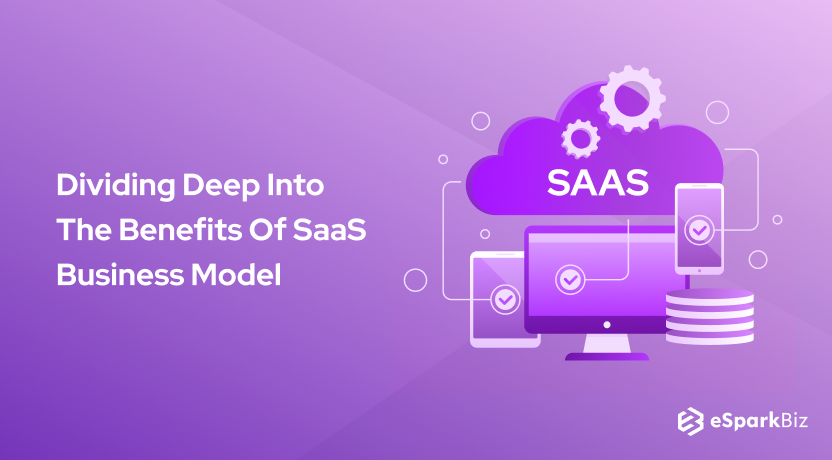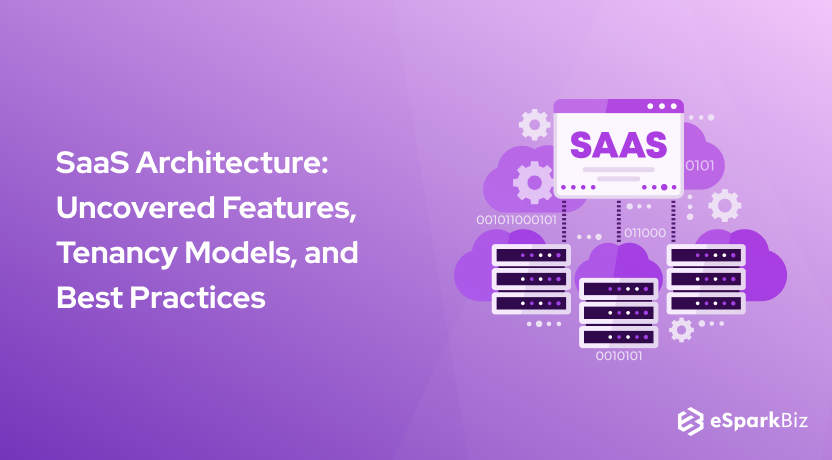Software as a Service (SaaS) is a successful business delivery model and a subscription-based software licensing, which is centrally hosted. Many businesses look for the right platform to launch their applications in a cost-effective and high-end manner. You can easily use saas application development services.
With the impact COVID-19 has left with us, the tradition of remote working has been enabled, due to which SaaS business models have been gaining a great attraction.
Several reasons can justify why SaaS software business models are needed for the current trend. Firstly, SaaS enables easy and quick selection and deployment of business applications, which has never been a simple task.
It provides aesthetic and updated features for business apps, which engage your employees and allow them to be more productive.
Moreover, SaaS Pricing Models can benefit you by getting you the lower infrastructure and maintenance costs, thereby supporting in developing low-cost business applications as well.
What Is the SaaS Business Model?

The SaaS business model, in other words, can be called a SaaS revenue model, which supports in generating revenue from the software that is hosted on the cloud.
The software can be purchased on a subscription basis and can be hosted on the cloud with the help of the Internet, which is not the case with any traditional software.
In other words, the Software as a Service business model can be explained as an end-to-end remote solution that can be effectively and efficiently handled and owned by the provider.
The software works well with the one-to-many model, which has pre-defined common code and data definitions, to be used by customers as a pay-on-use or subscription basis.
Now knowing what is SaaS model, next it is viable to know the most successful pricing models in the SaaS business.
How to Implement a Successful SaaS Business Model?
If you prefer using a SaaS business model for your business, you have taken the best decision. To develop great SaaS solutions, you should make it your priority and objective.
You must understand the difference between proof of concept (POC), minimum viable product (MVP), and prototype, on which you require clarity of the product development process.
If you can follow these rules, effortlessly, you can build and implement a SaaS business plan:
- Create a unique idea that has not launched in the market yet.
- If you wish to validate the idea, go with proof of concept.
- For attracting the seed-funding of your product, prototypes are mandatory; create such prototypes.
- Consider the freemium model and develop and launch a minimum viable product, which supports you in launching the basic version of your product first and collects users’ feedback and their reactions about the product.
- Gather all feedback, understand which is right and which is wrong, and finally, dive into developing a complete product.
- Pick the perfect SaaS pricing model that suits your business offering and create timely strategies that work out well.
- Finally, launch your product, market it, spread knowledge about your product to subscribers, and keep reaching heights. Correct your flaws then and there and keep repeating this process.
SaaS Business Models Benefits
Speed
Well, many might know that SaaS is a superfast business model and business owners love to have their products based on the SaaS model.
Also, you can easily adopt SaaS product rates without any doubt. Since it is cloud-based, it provides you with the privilege to create and launch the SaaS product in thunder lightning time in the market.
This keeps you one step ahead of your competitors where you can see them still brainstorming for years about the development and launch of a traditional software product in the market.
Product-Market Fit

This is something you should pay attention to because it is not easy to reach your target audience.
But with the SaaS business model, you can easily and quickly reach your target audience and understand their pain points to provide SaaS business solutions.
If you can catch the heat of the Product-Market fit, then you can rule this world by providing stunning SaaS solutions, thereby attaining high customer satisfaction as well.
Your customers start talking about you to their friends, who can be your potential leads.
Anytime, Anywhere
With the impact that COVID-19 has created for businesses, they require providers who can support them immensely on the cloud because customers find cloud-based solutions are secure and safer. It is not too late if you have not established your presence in the market.
If you can offer software as a service for 24/7, make your services remotely accessible anywhere at any time.
Since COVID-19 has inscribed the remotely-first trend, this service of yours should be an asset for your business.
Make it a viable platform for your customers to communicate, collaborate, and ensure continuity in performing business tasks.
Fast Time to Market
Naturally, any SaaS product does not require installation, whereas it takes time to develop a software product traditionally, validate it, and launch it in the market.
Even developing and launching an MVP consumes more time compared to launching a SaaS product.
It is easy with the SaaS business model because it requires only the Internet to implement all processes, within a jiffy.
A SaaS business model can support you in the quicker launch of a SaaS-based MVP, its access to users, and instant feedback on the product, which further assists in faster iterations and high-value offerings.
Reduces Churn Rate

Churn rate can be defined as a retention rate on an annual basis where your customers stop paying for your subscription.
All the time, you can look for a continuous revenue stream through subscription-based services from a SaaS revenue model when compared to the one-time cost you pay for any traditional licensing software.
You can effortlessly monitor the performance data of your product in the market through using CRM dashboards, from the place you are. This gives you a quick time to create plans according to the drop/growth in the churn rate.
Lower Cost
Software as a service is a versatile platform that eliminates the license fees associated with on-premise solutions upfront.
This allows your customers to scale up/down their expenses depending on the usage. A SaaS-based software considers the number of users, the number of emails sent, and data stored in CRM as the metrics for licensing.
Moreover, the customer will never be paying any additional cost for infrastructure since it is a cloud-based solution.
Flexibility and Scalability
The flexibility of the SaaS business model/software is something we have already seen in our previous points.
Customers pay only for the product features they use and only will pay more if the number of features they use increases.
Since there is no licensing fee or additional annual fee, you can sit relaxed and save some money on that.
Scalability is something highly supportive for customers because they need not upgrade their hardware at frequent intervals, and it is managed by the SaaS provider.
This could be one of the reasons why start-ups can cope with their existing competition.
Higher Adoption
The SaaS business model provides a plethora of tools that can be accessed from anywhere and increases the rate of adoption. This is supported by the reduced time factor and the facility of using SaaS tools anywhere.
The impact of the immediate results of the tool created in users can influence several other users and keep the count increasing.
Moreover, your employees can handle many of the SaaS tools independently, thereby resulting in increased productivity.
Worry-Free Upgrades
You will have to upgrade the on-premise software only twice in a year for every six months.
These upgrades are even necessary because the on-premise software holds the complete responsibility of the domain and also capable of handling significant downtime and interference if any.
Businesses instead of taking a high risk in affording downtimes go for upgrades to the latest version.
Less Friction in Sales
This is one of the benefits of SaaS business models for the software vendor. Be it the manager or the end-user, and can buy or spend the cost implied on your SaaS software.
Most of the SaaS solutions are available under $100 per user, per month for purchase. This eliminates friction in the sales cycle and does not restrict your managers from approving the IT budget.
Therefore, on-premise solutions can fit into your pocket with its cost-effective approach.
Recurring Revenue
SaaS Business models ensure a consistent flow of revenue than the benefit just SaaS does. If you can keep an eye on your churn rate, charging regularly can get you a regular flow of revenue stream.
Moreover, you can see the revenue compounding down the line while you keep increasing the number of users as well.
It makes sure your business certainty and can be highly attractive for investors. The recent trend focuses on investors looking to extend their funding for start-ups with a SaaS business model.
Ability to Pivot
Naturally, your on-premise software solutions have upgrades and the same should be upgraded at the customer end as well.
This should not be a big deal to accomplish if your customers show love for your product. Whereas in cases if it lacks, the SaaS software allows you to send updates as push notifications to your customers continuously.
By doing so refines your product allowing you to grab the prevailing opportunity in the market, thereby transforming potential customers to regular ones; similarly, turning down seldom customers to regular as well.
Reduced Hosting Cost
Within a split of a second, you can speed up your server with SaaS solutions like Amazon Web Services.
This mind-blowing benefit of the SaaS business model has brought down the cost of development and hosting, which has increased the scope for many new SaaS-based businesses in the market.
It is the quickest and realistic solution even to launch an MVP and also a simplified approach to test your MVP in the market and look into user feedback.
You can add as many features as possible to your product and launch in the market within a blink of an eye.
Compatible Across Multiple Devices
Like how SaaS benefits you by using across demography, similarly, accessibility on various devices is also an added advantage to consider.
Your customers can easily exploit the software since it is easily accessible from any device.
No Piracy
Since SaaS business model software can be availed only on a pay-per-use basis or a subscription basis upon metrics usage, there is no selling involved in it.
The software as a service provided only to customers who pay and use it; otherwise, like other traditional software, you can’t access it for free, even if you have the Internet.
So you need not worry about piracy issues or audits anymore.
Easier Expansion to a Foreign Market
SaaS, being an Internet-based application does not require any resellers or middlemen to support you with distribution in the SaaS business model. All you have to do is access the Internet to market it globally.
Managing Software Versioning
Unlike the traditional software models, you do not have to manually upgrade your SaaS business model.
The service provider takes the responsibility of upgrading your software solution and always you work on the latest version of the on-premise solutions.
No other software platform can offer you this facility, except SaaS business models.
Excellence in Customer Service
Extended customer support is one of the strongest benefits of the SaaS business model though it has newly come to the market.
Since SaaS service providing companies assist you all the time throughout the year even remotely, customers may not find any interruption with their services.
This increases your rapport with your customer and supports an improved brand image.
Secure Gateway
SaaS servers function across multiple locations and enable easy diversification of your establishment.
These servers create automatic back-ups ensuring data security, safety and availability. It is not possible to see server downtimes in SaaS servers, but if at all it happens, there is no need to worry about data backup.
Read also: A Guide On How To Calculate Customer Acquisition Cost For A SaaS Company
Robotics and Automation
Automation and robotics support each other and function alternatively in any platform, where it helps in SaaS business model are not the less.
With the increase in the invention of new technologies and software in the market, every industry looks for it.
Conclusion
Many businesses look for the right platform to launch their applications in a cost-effective and high-end manner. You can easily achieve this with a SaaS business model.
Like other traditional software solutions, you can enjoy the benefit of SaaS business models while you grow. Since it is flexibly scalable, you get results instantaneously.
SaaS Business Models can lead you to the effective development path and to make it more easier, hire developers in India who can extend their expertise and help you develop perfect solutions.
Therefore, it allows you to adapt to change instantly, rather than directly jumping into new product innovation and launch.
-
What Do You Mean By SaaS?
SaaS which is also known as Software as a Service is a way of delivering software applications to users over the internet.
-
What Is The SaaS Business Model?
SaaS Business Model is a model that generates its revenues from the software that is hosted in the cloud environment.
-
What Are The Advantages Of The SaaS Business Model?
The advantages of the SaaS Business Model are listed as below:
- Speed
- Product-Market Fit
- Anytime, Anywhere
- Fast Time To Market
- Reduces Churn Rate
- Lower Cost
-
What Are Some Examples Of SaaS?
BigCommerce, Google Apps, Salesforce, Dropbox, MailChimp, ZenDesk, DocuSign, Slack, HubSpot, etc.
-
What Are The Two Main Varieties Of SaaS?
Vertical SaaS and Horizontal SaaS.
-
What Are The Characteristics Of SaaS?
The characteristics of SaaS are listed as below:
- Web Access to Commercial Software
- Software Managed from a Central Location
- Software Delivered in a “One to Many” Model
- Users Not Required to Handle Software Upgrades and Patches









